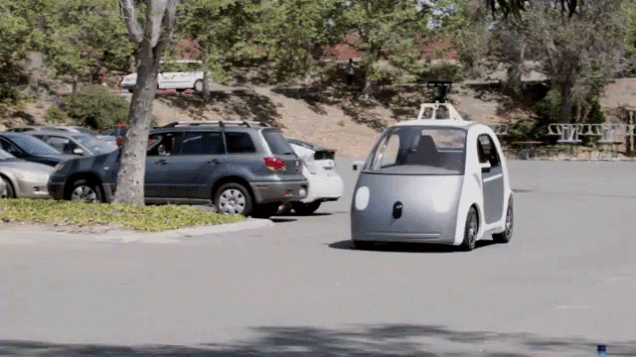Excerpts follow from two posts (one from Andrew McAfee at the Financial Times and one from the TED blog) that look at the progress of driverless cars, which have improved at a stunning pace since the “Debacle in the Desert“ in 2004. Elements of driverless will be helpful, but they change the game in many ways–some wonderful, some concerning–only when they become completely autonomous. McAfee has been further convinced about the sector by recent developments.
_________________________
From McAfee:
Transportation. Most of us have heard of driverless cars by now. I had the chance to ride in one of Google’s in 2012. It was an experience that went from mind-bending to boring remarkably quickly; the car is such a good and stable driver that I quickly lost all sense of adventure while I was in it. Still, though, I was unprepared for how much progress has been made since then with autonomous road vehicles. Google project director Chris Urmson brought us up to speed with that company’s work, and made a compelling case that we should be striving not for more and better tech to assist human drivers, but instead to replace them. Doing so will save lives, open up opportunity to the blind and disabled and free us from a largely tedious task. And in response to the criticism that self-driving cars aren’t good at dealing with unanticipated events, he showed a video of what happened when one of his fleet encountered a woman in a wheelchair chasing a duck around in the street. The car responded beautifully; we in the audience lost our minds.•
From the TED blog:
Why we need self-driving cars. “In 1885, Carl Benz invented the automobile,” says Chris Urmson, Director of Self-Driving Cars at Google[x]. “A year later, he took it out for a test drive and, true story, promptly crashed it into a wall.” Throughout the history of the car, “We’ve been working around the least reliable part of the car: the driver.” Every year, 1.2 million people are killed on roads around the world. And there are two approaches to using machines to help solve that problem: driver assistance systems, which help make the driver better, and self-driving cars, which take over the art of driving. Urmson firmly believes that self-driving cars are the right approach. With simulations that break a road down to a series of lines, boxes and dots, he shows us how Google’s driverless cars handles all types of situations, from a turning truck to a woman chasing ducks through the street. Every day, these systems go through 3 million miles of simulation testing. “The urgency is so large,” says Urmson. “We’re looking forward to having this technology on the road.”•
Tags: Andrew McAfee, Chris Urmson

